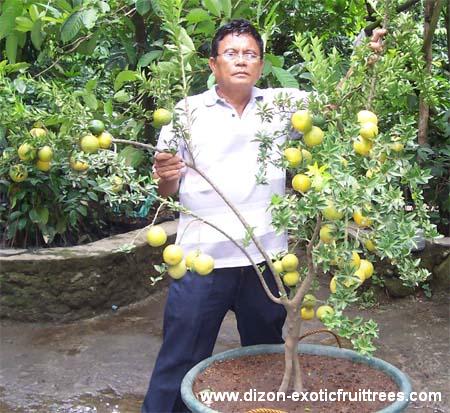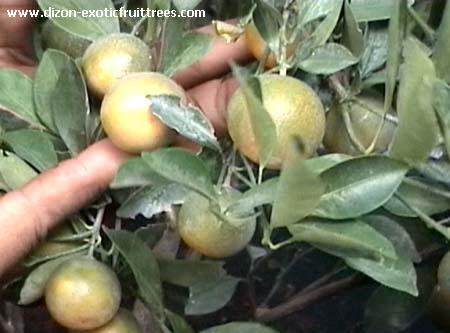| The Philippine
Star, Agriculture, Sunday, January 6, 2008 |
| BREAKTHROUGH: |
|
Dizon
develops faster propagation methods |
| Editor: Roman F.
Floresca |

Noted pomologist Bernie Dizon, known for espousing modern plant
technology, has achieved a series of breakthroughs in the
propagation of three outstanding citrus varieties - Japanese
dwarf sweet orange, Luz calamansi and dwarf Rio red
grapefruit from the US.
Using his
methods, Dizon said the three citrus varieties can be grown
in containers, or planted in backyards at intervals of as
close as three meters owing to the fact that they don't grow
as tall as other varieties planted through conventional
means.
The
Japanese orange, with small leaves, is a dwarf variety and
is ideal for bonsai gardens. It can bear fruits continuously
throughout the year. Its fruit is medium size, sweet in
taste and contains only a few seeds, sometimes none.
It is
very prolific and can be induced to bear fruit quite easily
by simply applying organic and complete fertilizer. It is
resistant to pests and diseases.
Dizon
said the orginal source of Japanese orange was Ning de Vera
of Forbes Park in Makati City. De Vera is a collector of
outstanding and rare plants in his hobby farm.
Citrus plants like the Japanese orange is usually propagated
by means of grafting and marcotting which care both slow
because the plant normally starts bear flowers and fruits
after only a few months from planting. |
What
Dizon did was to allow the five-year-old Japanese orange to
produce watersprout as budstick for budding into a two-year
old native rootstock. Using this method, Dizon was able to
produce fast-growing seedlings much more rapidly than
through the usual methods of marcotting and grafting.
Another citrus variety that Dizon has been working on is the
Luz calamansi, a new variety of calamansi that was named
after the late Luz Banzon Magsaysay, mother of former Sen.
Ramon Magsaysay Jr. whose countrywide development fund (CDF)
was used to fund a project that was started by Dr. Ben
Vergara of the University of the Philippines at Los Baños.
 |
The
Luz calamansi
is a fast grower, prolific and is much juicier than the
native variety. Moreover, it has only two seeds compared to
native calamansi which has 12 seeds. The Luz calamansi
variety is ideal for container growing and
bears fruits
continuously throughout the year. |
Dizon
bought big mother trees in April 2007 which he is now
reproducing rapidly by means of budding with the use of
two-year-old native varieties as rootstock.
The
noted pomologist has also developed a faster propagation
method for the Rio red grapefruit, the latest variety of
grapefruit in the US brought into the country by a
balikbayan in 2003. The balikbayan turned over the plant to
Dizon for propagation with the understanding that he would
come back for them when he retires. Dizon said the
balikbayan intends to plant them in his farm in La Union.
Valued for its juice and fresh flesh, its unique balance of
sweetness and tang, the seedless red grapefruit is priced at
P200 per kilo, the most expensive citrus in the market. It
is in high demand among people who want to slim down. It is
also known to contain nutrients and minerals that are good
for the heart.
Dizon
observed that the grapefruit budded on native rootstock grow
faster than the original tree from the US.
The
drawf Riod red grapefruit variety thrives best in warmer
areas in the US.
|

